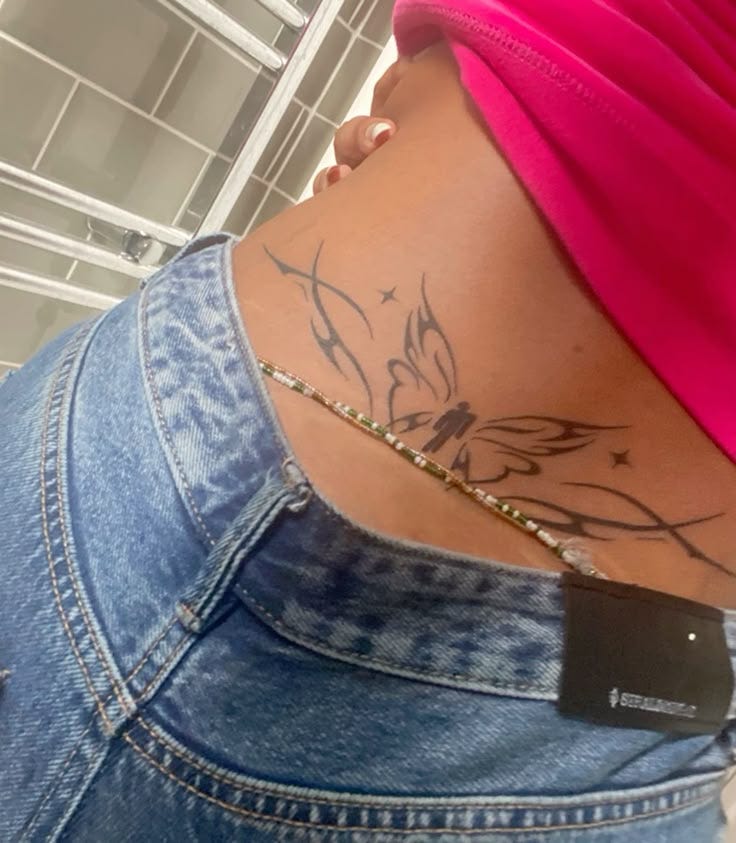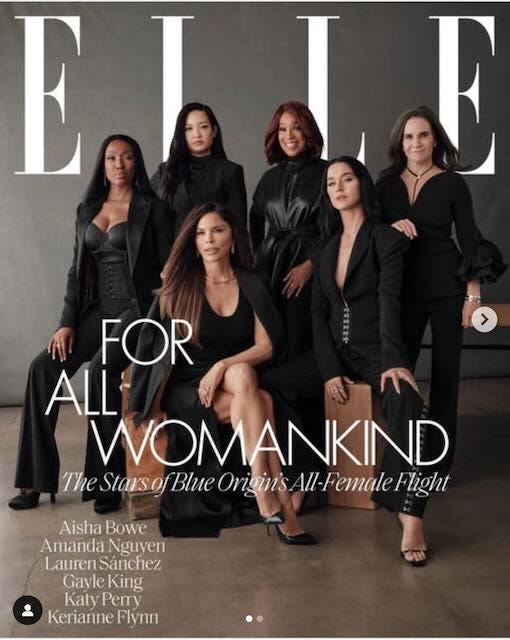Edition #18
Body hair is (still) not back but tramp stamps and dire wolves are, I'm still going on about microplastics, skincare recs, divorce post-50, and random scary stuff.
For a while now we’ve been quietly celebrating the idea that Gen Z is more down with body hair than older generations. What freedom! What savings! And yet, alas, the self-acceptance seems to have been short lived. Casey Lewis’ After School reports that US waxing chain Sugared + Bronzed is booming, with a 40% spike during what they’re calling the “Coachella bump”, with salons staying open until midnight to meet demand. Our favourite beauty culture theorist Jessica DeFino also weighed in on the topic in Beauty Matter, musing that while pubic hair was touted as being back editorially and in marketing, it probably never really took off IRL. “The average person doesn't necessarily feel that freedom.”
Also according to After School, it’s not only those silky smooth millennials inspiring modern body trends. That Gen X staple, the tramp stamp, is apparently also back. (For Gen Z, I mean. Obviously for Gen X-ers who have one, they never went away.)
Tattoo artists report a surge in lower-back tattoo requests, alongside rising trends like sticker-like “charm” tattoos and cyber-spiritual designs inspired by figures like Billie Eilish. According to Allure, Gen Z’s interest reflects a broader shift toward reclaiming stigmatized styles and using body art for self-expression.
Big, buzzy health scares don’t usually freak me out too much before the evidence is there to prove the freak out is worth squeezing in with all my other more pertinent freak outs, but this whole microplastic thing really gives me the heebie jeebies. The NYT just ran a story on the lab that released that study earlier in the year finding that human brain samples they tested from 2024 had nearly 50 percent more microplastics than samples from just 2016. (Specifically, about seven grams of plastic per brain — about as much as five water bottle caps.) Also that the brains of people suffering from dementia have far more microplastics than those without, as do the placentas of preterm babies contained more than those delivered at term. It’s all a mystery!
Dr. Campen suspects the main way these plastics get inside our bodies is when we ingest them, long after they’ve been discarded and started to break down. He is less concerned about so-called fresh plastics, like those that slough off cutting boards and water bottles as we are using them, because those particles are much larger and newer than what he has measured. And research suggests that the body clears out some larger microplastics.
Dr. Campen acknowledged that his view on fresh plastics was “unconventional,” and other scientists say it’s worth taking steps to reduce your exposure. It’s clear that microplastics can leach out of water bottles, microwaved food containers and synthetic clothing, and research from animal studies suggests these particles could be harmful, said Tracey Woodruff, director of the program on reproductive health and the environment at the University of California, San Francisco.
“Maybe more of it is coming from this degraded microplastic, but that doesn’t mean you’re not getting exposed from these other, fresher microplastics,” Dr. Woodruff said. Larger particles can still affect the gut, which might then affect the rest of the body, Dr. Campen said.
Eight years ago, Rio Viera Newton released a Google Doc of her self-described ‘psychotic skincare routine’ on The Strategist that went madly viral. She’s just updated it - particularly useful for anyone suffering from adult acne.
A biotech startup called Colossal Biosciences has brought back to life the dire wolf—an animal that until this week I thought was just Game of Thrones fiction—which had been extinct for over 10,000 years. The litter of dire wolf pups—males Romulus and Remus and female Khaleesi (of course) was created using DNA extracted from dire wolf skull and tooth fossils blended with the edited genetic code of a gray wolf. The furry cuties are at an undisclosed location for now, but Colossal (which has George R.R. Martin and Peter Jackson as investors) is hoping to breed them into a viable species to house on Indigenous preserves. Next, they’re also hoping to bring back the woolly mammoth. Not, thankfully, the T-Rex.
Bloomberg reports that the way Google has adapted search to incorporate AI answers - which at this point are very often wrong, it gave me a completely gobbledygook answer to a simple White Lotus cast search just this week—has made traffic to independent websites plummet, leading many to shut down, “a cycle experts say could eventually degrade the quality of information Google can access for its search results — and to feed its AI answers.” This is obviously going to lead to an internet graveyard in the future when each bit of misinformation contributes to the next, but it’s also worth noting that each time you get AI answers that you didn’t ask for, it also uses ten times more energy than a standard search. (You can avoid it by adding -AI on to every search, or use https://udm14.org/ for Google results that don’t include them automatically.) Travel sites have been the most affected, with cooking said to be next as Google rolls out a new functionality that summarises recipe content from creators. The company’s response to the problem it’s creating for businesses and the future of all information is basically sorry, not sorry:
…behind closed doors, the company has acknowledged the toll on publishers, even inviting a group of about 20 website creators to its Mountain View, California, headquarters for conversations with employees in the search division last October.
Google representatives apologized to the web creators and said their sites represented exactly the kind of helpful content that the company wanted to surface in search, according to creators who were in attendance. But Googlers also said they couldn’t give any guarantees that their websites would recover, because the search product had fundamentally changed in the AI era, multiple attendees said.
Looking for something to watch now that White Lotus is over (RIP Chelsea)? This NY Mag list of ‘notable new releases’ over the next two weeks feels like a vital public service. (I, for one, am happy—for want of a better word—to welcome back, The Handmaid’s Tale, aka 2025’s Real World.)
A girl found out her mum’s best friend is Club Chalamet and as someone who assumed that the freaky full-time fan of a man half her age was a basement dweller of the highest order, the idea that she has friends is mind-blowing to me. I need to know more.
If our current affairs aren’t doom and gloom enough for you, No More Tears: The Dark Secrets of Johnson & Johnson is a new book by journalist Gardiner Harris’ in which he says the company has “knowingly contributed to the deaths and grievous injuries of millions” through some of their products, including the iconic baby powder that my nanna (and yours, probably) pretty much used to coat us in after every bath like she was prepping schnitzels (note that Johnson & Johnson has denied many of these allegations). Listen to an author interview here.
Airmail reports that more people post-50 are getting divorced:
The gray divorce, as it’s called, has become something of a status symbol. Sergey Brin, Gisele Bundchen, and, as tabloid readers know all too well, Jeff Bezos have all started fresh recently, and they seem extremely happy about it. Could midlife divorce be the ultimate act of self-care?
The rationale is simple: our tastes and desires can change as we are faced with our own mortality. The person who makes a reliable co-parent can feel more like a grouchy roommate when the children are gone. More importantly, if you know that you can swap your partner out at the halfway point—and are able to have sex without a calendar invite—maybe you’ll value him with the reverence reserved for an Eames lounge chair rather than an Ikea dresser.
They also reported on an aesthetician who has moved into non-permanent penis enlargements using filler and honestly there was too much gold in the story for me to choose a small part to quote, so here is a context-free selection of the lines that gave me pause:
Moore says that each visit, he uses between four and six syringes of filler to add around a quarter of an inch in girth to most penises. However, the majority of his clients typically request a full inch of augmentation, so they pay between $10,000 and $12,000 for several shots over six months or so.
…
In order to help the filler settle and become smooth, he created the Phallosleeve, a millimeters-thin silicon sleeve that patients wear like a genital leg warmer for three weeks after each treatment to keep everything in place. (The Phallosleeve comes in 10 sizes.)
…
“I’ve never had a micro-penis to treat, and the majority of men have an average to above average penis, or even really large,” he says, noting how early access to pornography has skewed self-perception among his younger clients in particular.
…
Moore offers financing for those unable to pay in full up front; many of his patients are blue-collar workers. One, for example, “had never purchased anything for himself in his life, but he purchased a penis,” says Moore.
…
Another success story concerns a man in his 50s whose second wife was much younger. She found his penis unsatisfying, and they had addressed the issue by recruiting a large-penised proxy from a Reddit forum to perform in the bedroom. When the emotional complications of this outsourcing almost ended their marriage, he decided to undergo Phallofill to add an extra 1.25 inches. The couple reconciled, and the proxy never returned.
…
But as evidence of Phallofill’s safety, Moore cites his almost 500 patients. Only two had infections—the first because he had sex within a few days of treatment, and the second from sitting in a car for three days while working as a border-patrol agent, sweating and sedentary.
Uh, speaking of border control agents, if true, this anonymous letter to the SMH’s Traveller section is a bit terrifying:
Planning to travel to Donald Trump’s America? Think twice. You are neither wanted nor welcome. On March 11, following a 24-hour flight from Sydney via Hong Kong and New York’s JFK Airport, with my final destination being Miami to board a cruise, I was detained by border control at JFK for “enhanced vetting” as per the executive directive signed by the US president on January 25. Eight hours later, after three interview teams and extensive examination of my laptop and iPhone, they decided I’d come on an unusual route to the United States, namely from Australia via Asia (I flew premium economy and Cathay Pacific had the cheapest airfare). Although there was no evidence of wrongdoing, I was sent back to Australia, meaning I was unable to join my cruise, valued at $15,000 and not refundable.
My attachment to the ELLE brand is well-known, but there’s nothing in me that understands the decision of the US edition to run this Late-Stage-Capitalism-goes-to-Space photo op on the cover. Abort mission.
See you next week xxxx









Microplastics and US travel under Trump. Many terrifying things in this post.